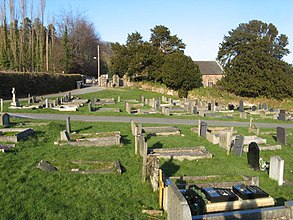
A necrosol is a type of anthropogenic soil which is commonly found in cemeteries or other burial sites, and is characterized by the presence of human remains in the soil. The term necrosol was first introduced by Graf[1] during his study of flora and vegetation at a cemetery in Berlin, Germany, in 1986.
Necrosols form during the interaction of the soil with human remains and other materials included in the burial, such as coffins, textiles and other human-made materials.[2] This soil was included under urban soils in a classification system proposed by Burghardt in 1994,[3] but are present in both urban and rural environments.[4] Future research on Necrosols can support the field of archeology and enhance our understanding of past burial practices.[2]
- ^ Graf, Annerose (1986). Flora und Vegetation der Friedhöfe in Berlin (West). Berliner botanischer Verein. OCLC 923266515.
- ^ a b "Understanding Necrosol pedogenetical processes in post-Roman burials developed on dunes sands". www.researchsquare.com. 2022-03-16. Retrieved 2022-04-22.
- ^ Burghardt, Wolfgang (1994). "Soils in urban and industrial environments". Zeitschrift für Pflanzenernährung und Bodenkunde. 157 (3): 205–214. doi:10.1002/jpln.19941570308. ISSN 0044-3263.
- ^ Madden, Charles; Pringle, Jamie K.; Jeffery, Adam J.; Wisniewski, Kristopher D.; Heaton, Vivienne; Oliver, Ian W.; Glanville, Helen; Stimpson, Ian G.; Dick, Henry C.; Eeley, Madeleine; Goodwin, Jonathan (2022-03-22). "Portable X-ray fluorescence (pXRF) analysis of heavy metal contamination in church graveyards with contrasting soil types". Environmental Science and Pollution Research. 29 (36): 55278–55292. Bibcode:2022ESPR...2955278M. doi:10.1007/s11356-022-19676-z. ISSN 1614-7499. PMC 9356940. PMID 35318600.